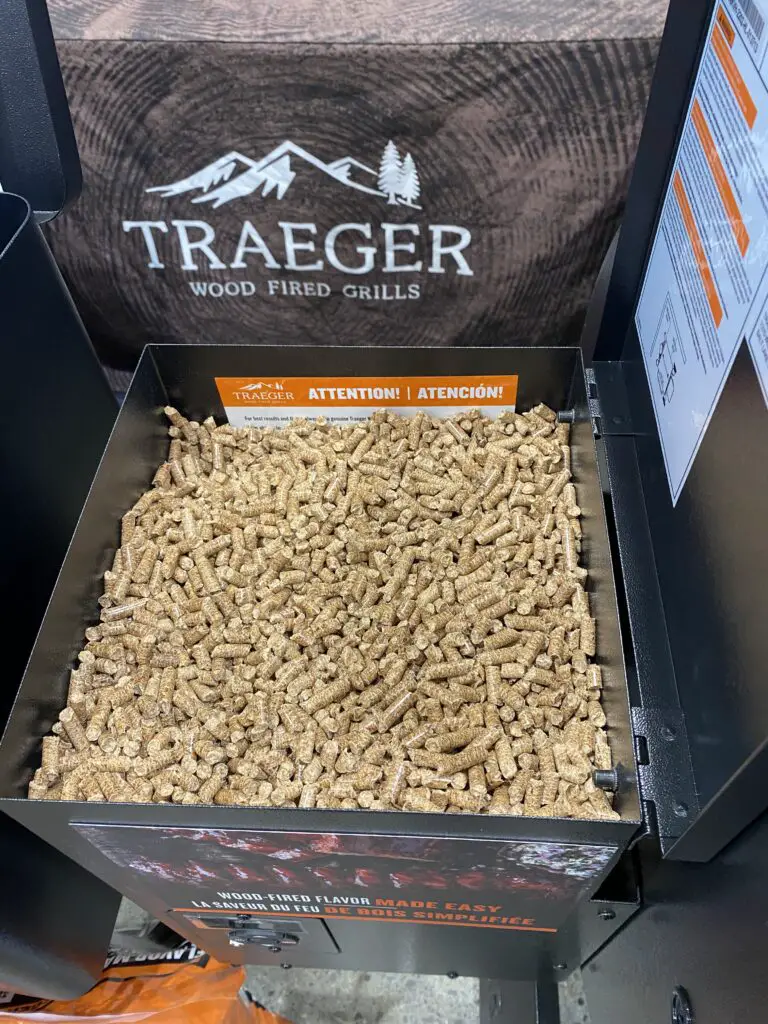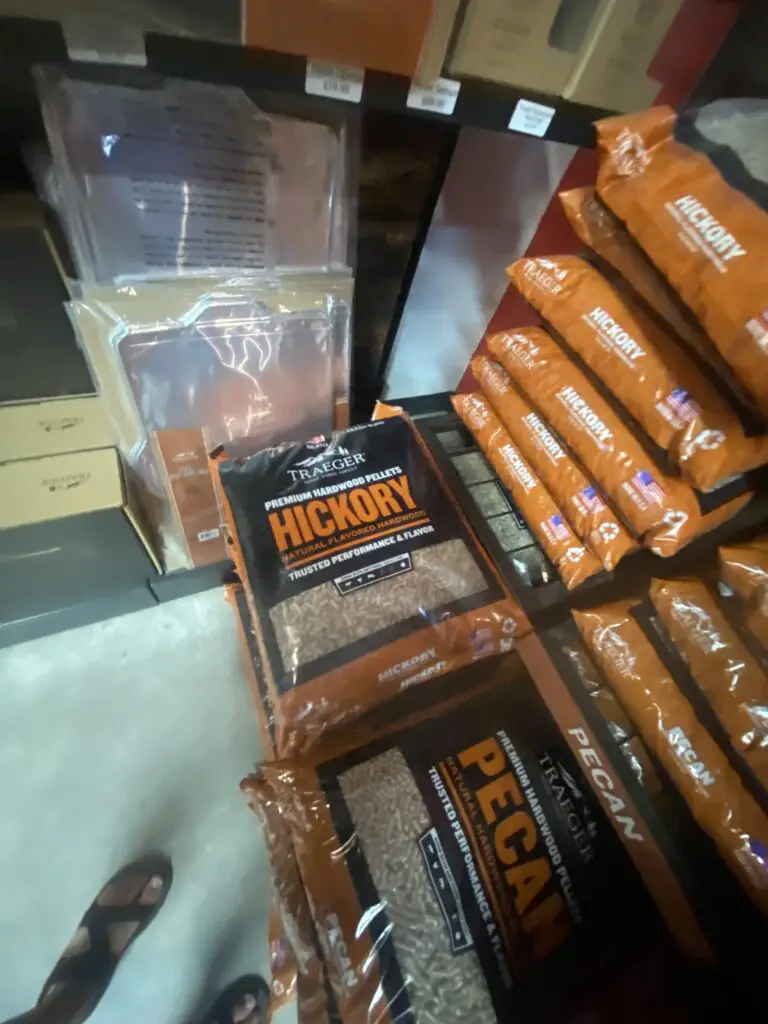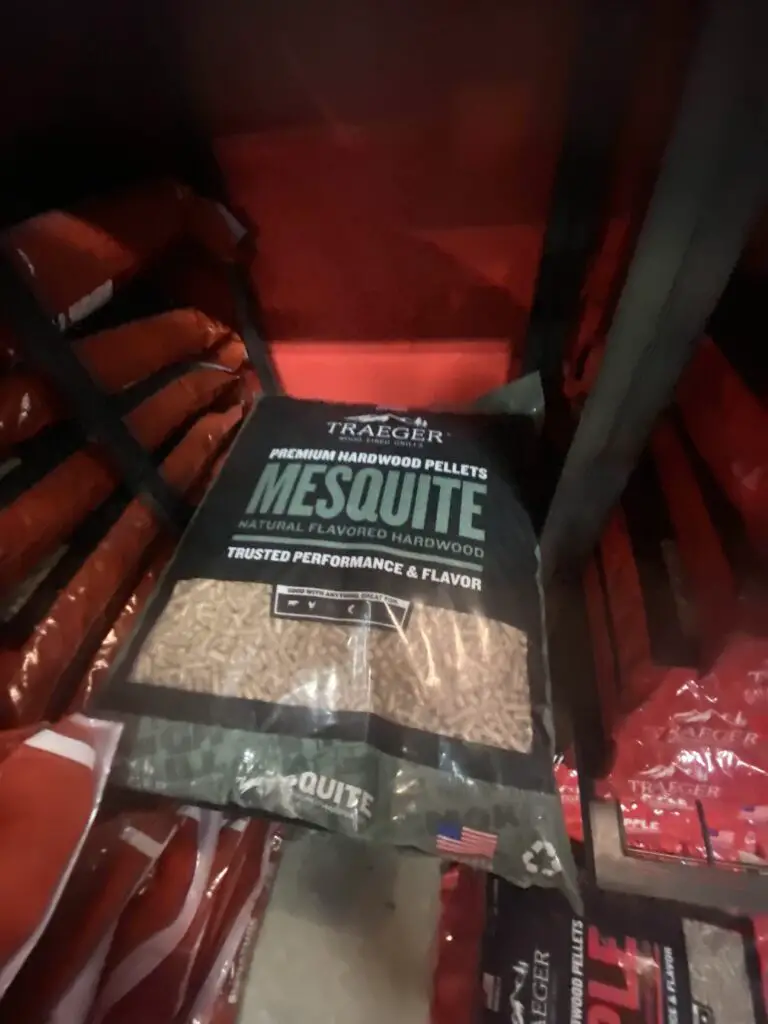We strive to provide you with authoritative, trustworthy, and expert advice. In doing so, the staff at bbqdropout.com performs extensive research, editing, and fact checking to every post on this webiste. If you feel that this article can improve, please feel free to reach us at staff@bbqdropout.com
Before continuing this article, I wanted to let you know that I have a YouTube channel where I showcase all sorts of video content related to BBQ. Subscribing would mean a lot to me, and I very much appreicate all the support!
The idea of a wood pellet fueled smoker or grill, like a Traeger, is that the pellets fall into their proper place as the grill is burning and continue to feed the fire at a steady pace.
This avoids big flareups, runs the fuel and heat level at a constant pace, and allows for long-term cooking like the heat applied slowly in a smoker.

However, while Traeger smokers can produce some amazing grilled products with slow-cooking using this method, they can also plug up and get stuck as well.
A lot depends on using the right fuel, maintenance, and avoiding moisture exposure.
Traeger Pellets Getting Stuck
A number of problems can cause Traeger pellets to get lodged in the grill mechanisms and not flow properly.
Moisture is a big culprit, especially when the grill has been left outside and condensation has built up. Traeger pellets, as well as any other kind of pellet, are usually made of wood.
Exposed to humidity, these pellets will expand in size. When that occurs, they don’t fit in the Traeger feed process near as well and can get plugged. Additionally, they may even start to crack, crumble and fall apart.

When this occurs, the shape of the parts are irregular, can also get hung up in nooks and crannies. The auger, which feeds the pellets into the firepot, is particularly sensitive to jams.
How Do I Fix the Auger on my Traeger?
In a lot of cases, one just needs to reverse spin the auger or remove the material in it to free up the unit. The auger should not be forced or pried.
That will damage it. If the auger is really stuck, and no amount of spot cleaning seems to work, then it should be removed carefully per assembly instructions.

This can be a bit tricky and should be done with the right tools. Once freed, the auger can be cleaned out properly and rotated clearly to remove any blockages.
Why does my Traeger Stop Feeding Pellets?
Pellets can stop flowing for a number of reasons. Much of the force that moves them is gravity and the auger spinning.
Unfortunately, if the pellets lodge wrong or, more commonly, they have swollen and become too big, they will jam up. Completely dry pellets are ideal.
Even if they are pushed, they move easily, don’t get stuck, and they don’t turn to mush and create a sludge when moved by the auger.
While no one plans to have moisture affect their fuel feed, once it does, the bad pellets need to be removed.

Even with heat applied, the affected pellets won’t shrink down to their correct size again after the fact. That sizing occurred because the pellets were compressed during their manufacturing.
Wet Pellets in Traeger
Aside from getting liquid exposure directly, most Traeger pellets already loaded in a grill get wet either from condensation or being exposed to humidity.
Where people are located in an area with a high amount of humidity, leaving pellets out in the open air or in hoppers that are generally not sealed will end up creating swollen pellets within a certain amount of time.

Wood pellets simply soak up moisture the longer they are exposed. And as they pull in moisture, the pellets grow in size.
At first, this won’t be much of an issue. However, as more and more pellets are involved, they become a clogged mess inside a Traeger.
Do you Need to prime Traeger Auger Every Time?
Generally, some amount of fuel needs to be in the firepot when it ignites. Otherwise, there will be nothing to sustain the heat, much less allow it to grow to a proper flame. The ignite mechanism will have a bit of ability to start burning the pellets, but if there is an insufficient supply in the firepot itself, nothing will happen and no heat will be generated.
Final thoughts
Planning a head avoids a Traeger becoming a big headache on the day you want to cook.
Double check your Traeger a day or two before, make sure you have dry wood pellets ready to load, and give yourself time to fire things up patiently instead of rushing things.
This will avoid headaches, jammed parts, and most importantly, your time spent cooking being interfered with.
Robert is a certified Pitmaster, with over a decade of experience in smoking the best meats you’ll ever feast upon. He also has a Bachelor of Business Administration from the University of Texas at San Antonio. When he’s not researching technical topics, he’s most likely barbecuing in his backyard.
